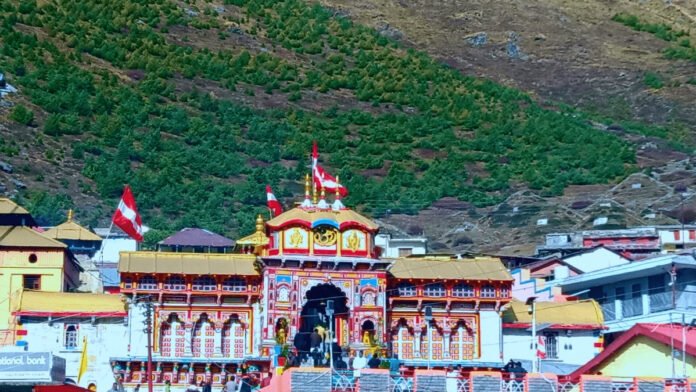In a long-standing tradition, the closing date for Badrinath Dham in the Chardham Yatra of 2025 will be announced on 2 October, coinciding with Vijayadashami. The declaration will take place in a religious ceremony at the temple complex, where priests and temple authorities will decide the exact day when the shrine’s doors will be sealed for the winter months.
Our correspondent reports that the ritual is part of an annual practice in which the Badrinath-Kedarnath Temple Committee (BKTC) and the main priest, known as the Rawal, consult the Panchang and auspicious timings before fixing the “kapaat bandh” date. The decision is traditionally made on Vijayadashami, a festival that symbolises the triumph of good over evil, giving added significance to the occasion.
Our correspondent adds that during the ceremony, details of the final pujas, temple processions and the movement of the presiding deity to Joshimath will also be confirmed. Pandu Kuber’s ceremonial vehicle, along with temple treasures, will accompany the procession to the winter seat, where worship will continue until the following spring. On this day, temple staff and local residents will also receive ceremonial turbans and supplies for the next pilgrimage season.
Officials note that until the official closure, pilgrims may continue to visit Badrinath, with large numbers expected to arrive during the festival period. The shrine typically closes in late October or early November, depending on weather conditions and astrological calculations. Once sealed, it will remain shut for nearly six months due to heavy snowfall and extreme cold in the Garhwal Himalayas.
The Chardham Yatra, which includes Badrinath, Kedarnath, Gangotri and Yamunotri, is one of the most important religious circuits in Uttarakhand. While the date for Badrinath’s closure is set on Vijayadashami, Kedarnath’s date is announced on Bhai Dooj, Gangotri’s on Dussehra, and Yamunotri’s on Diwali. This synchronised process ensures that devotees and administrators have clarity for planning their pilgrimages and logistical arrangements.
Our correspondent reports that once Badrinath is closed, daily rituals and worship continue at the Narsingh Temple in Joshimath, considered the winter seat of Lord Badri Vishal. Devotees from across the state and beyond continue to offer prayers there until the doors of the main shrine reopen in May of the following year.
Our correspondent adds that the seasonal closure has a wide impact on local communities. Shopkeepers, hoteliers and porters in Badrinath and surrounding villages see the end of the pilgrimage as the beginning of their own migration to lower altitudes for the winter. Many families who rely on the yatra for their livelihood prepare to shut their establishments and move to towns in the plains until the next season begins.
For pilgrims, the announcement of the closure date marks the last opportunity of the year to visit the shrine. Devotees who cannot make the journey before the date are encouraged to participate in the winter rituals at Joshimath. Temple officials often remind visitors to plan their trips well before the kapaat bandh, as weather conditions in October can be unpredictable, with sudden snowfall or landslides sometimes disrupting travel.
The state administration has been working closely with the BKTC to ensure that the last phase of the yatra runs smoothly. Security, crowd management, medical services and transport facilities are being reviewed to accommodate the expected surge in visitors before the closure. Officials have also instructed that arrangements for elderly and differently abled pilgrims be strengthened in this final stretch.
The annual cycle of opening and closing the Himalayan shrines is a deeply rooted tradition that has been followed for centuries. Devotees believe that even when the temple doors are shut, the deity continues to bless them from Joshimath. The ceremony on Vijayadashami is therefore not only a matter of logistics but also of spiritual continuity, symbolising the transition of divine presence from the snowbound peaks to the lower valleys.
With the date of closure to be declared on 2 October, anticipation is high among devotees, priests and local communities alike. The ritual underscores the blend of faith, tradition and seasonal rhythms that define the Chardham Yatra, ensuring that the cycle of pilgrimage remains unbroken year after year.























